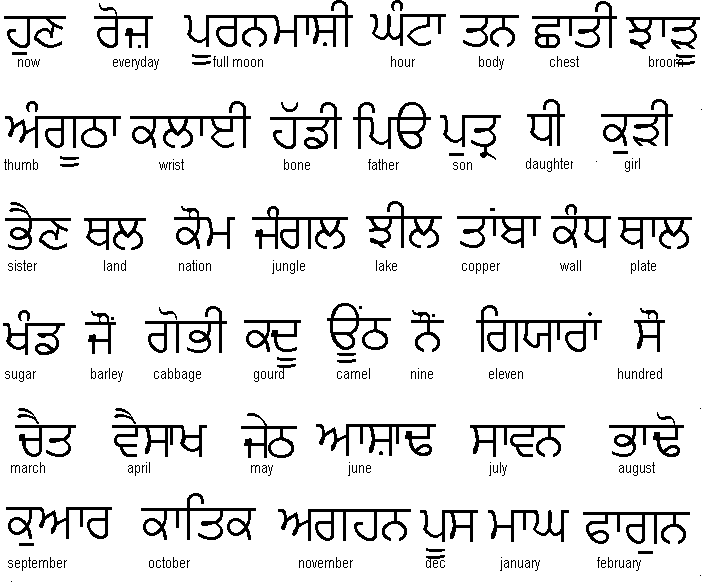

The answers are hoon , roz , poornmashee, gantthaa , t'n, chhath'i.
second line angoottha, klaai, hddi, pio, put'r, thhee, kud'ee
third line bhaaen, th'l, kaum, jungle, jheel, t'aambaa, kundh, th'aal
fourth line khand, jaun, gobi, kdhoo,oontth, naun', giyaraan', sau
fifth line chaaet, vaaesaakh, jaetth, aashaaddh, saavn,bhaado
sixth line kuaar, kaalik, aghn, poos, magh, fagun
Inanimate objects are given masculine and feminine names . It would be tedious to lean them all. In general the bigger things are male eg OCEAN while the smaller ones are female eg RIVER. Male ones end in AA sound while female ones in EE . So one would say Samundar gaherAA haae ( the ocean is deep) and nadi gaherEE haae( the river is deep) . The earth is female and the sun male etc.
Note that in Punjabi we have the verb after the object . In English we write
subject -verb-object
eg Indus is deep
while in Punjabi it would be
subject-object-verb
Indus deep is - Indus gaheree haae
Of course one could say for dramatic effect
This is ....John!
Ye haae ... John !
and it would be gramatically correct but if you did it all the time you would get strange looks. So the correct way to say it is .. Yeh John haae.